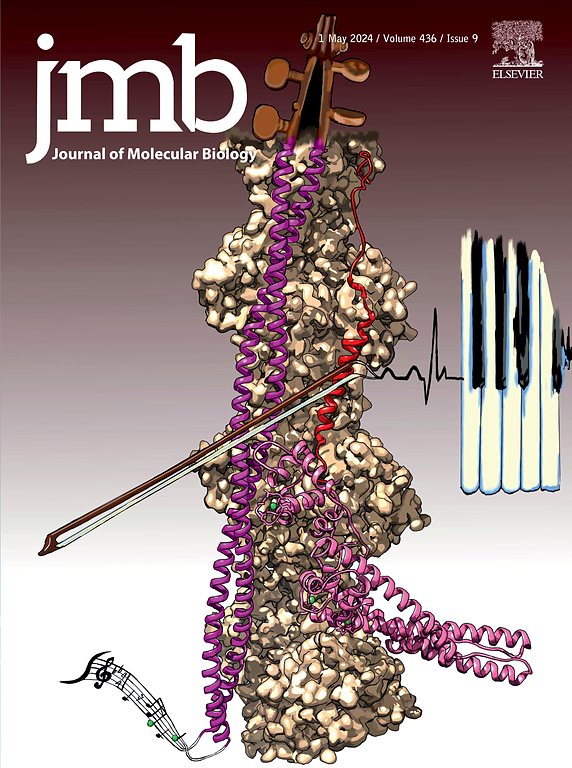High Risk, High Reward: By Selecting Tsg101, A Protein That Sorts The Trash, As Our Personal ESCRT, Both HIV And I Were Able To Bud
IF 4.7
2区 生物学
Q1 BIOCHEMISTRY & MOLECULAR BIOLOGY
引用次数: 0
Abstract
Being asked to write this “Reflections”-type article is a special honor offered at the end of one’s career and I am grateful for the opportunity to think back over the more than 4-decade span of my career in the field of HIV/AIDS Retrovirology. Although at this point in time there is still no vaccine or curative therapy for HIV/AIDS, this invitation to reminiscence comes in the year of FDA approval of Lenacapavir, the first-in-class anti-HIV agent targeting the viral capsid. This triumph in the field is the culmination of efforts of many, including some in my own laboratory, who were among the first to produce recombinant capsid protein (CAp24) for structural and biochemical studies. A current drawback of this drug is its low genetic barrier to viral resistance. The research finding considered to be our most important contribution to the field of HIV research was framed by the challenge to suppress the emergence of resistant variants, and I describe the paths that drove me to risk exploration of the non-traditional for potential solutions. Finally, I share my views on what I consider to be an important open question for the future: how to achieve greater diversity and inclusion in Science.

高风险,高回报:通过选择Tsg101,一种分类垃圾的蛋白质,作为我们的个人ESCRT, HIV和我都能够发芽。
被邀请撰写这篇“反思”类型的文章是在一个人的职业生涯结束时提供的一种特殊荣誉,我很感激有机会回顾我在艾滋病毒/艾滋病逆转录病毒学领域40多年的职业生涯。虽然目前还没有针对HIV/AIDS的疫苗或治疗方法,但这一邀请是在FDA批准Lenacapavir的那一年提出的,Lenacapavir是第一种针对病毒衣壳的抗HIV药物。这一领域的胜利是许多人努力的结果,包括我自己实验室的一些人,他们是最早生产用于结构和生化研究的重组衣壳蛋白(CAp24)的人之一。目前这种药物的一个缺点是它对病毒耐药性的遗传屏障较低。研究发现被认为是我们对艾滋病毒研究领域最重要的贡献,它是由抑制耐药变体出现的挑战构成的,我描述了促使我冒险探索非传统解决方案的途径。最后,我就我认为未来一个重要的开放性问题分享我的观点:如何在科学中实现更大的多样性和包容性。
本文章由计算机程序翻译,如有差异,请以英文原文为准。
求助全文
约1分钟内获得全文
求助全文
来源期刊

Journal of Molecular Biology
生物-生化与分子生物学
CiteScore
11.30
自引率
1.80%
发文量
412
审稿时长
28 days
期刊介绍:
Journal of Molecular Biology (JMB) provides high quality, comprehensive and broad coverage in all areas of molecular biology. The journal publishes original scientific research papers that provide mechanistic and functional insights and report a significant advance to the field. The journal encourages the submission of multidisciplinary studies that use complementary experimental and computational approaches to address challenging biological questions.
Research areas include but are not limited to: Biomolecular interactions, signaling networks, systems biology; Cell cycle, cell growth, cell differentiation; Cell death, autophagy; Cell signaling and regulation; Chemical biology; Computational biology, in combination with experimental studies; DNA replication, repair, and recombination; Development, regenerative biology, mechanistic and functional studies of stem cells; Epigenetics, chromatin structure and function; Gene expression; Membrane processes, cell surface proteins and cell-cell interactions; Methodological advances, both experimental and theoretical, including databases; Microbiology, virology, and interactions with the host or environment; Microbiota mechanistic and functional studies; Nuclear organization; Post-translational modifications, proteomics; Processing and function of biologically important macromolecules and complexes; Molecular basis of disease; RNA processing, structure and functions of non-coding RNAs, transcription; Sorting, spatiotemporal organization, trafficking; Structural biology; Synthetic biology; Translation, protein folding, chaperones, protein degradation and quality control.
 求助内容:
求助内容: 应助结果提醒方式:
应助结果提醒方式:


